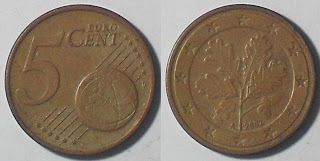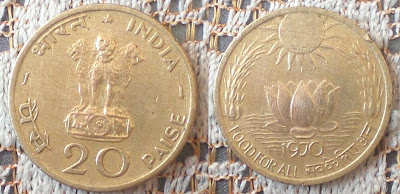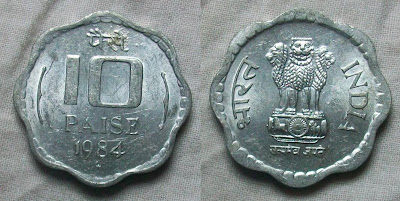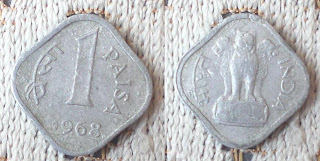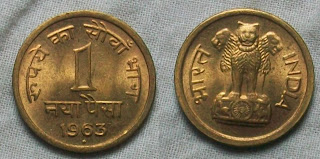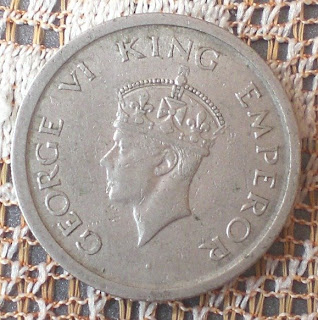The U.S. coins show "Liberty" , "In god we trust" , the year and a well known figure on the obverse; and the "United States of America" , "E Pluribus unum" , a well known building or statue and the denomination on the reverse.
The general meaning of each Latin word is clear: Pluribus is related to the English word: "plural." Unum is related to the English word: "unit.". E Pluribus Unum describes an action: Many uniting into one. An accurate translation of the motto is " Out of many, one" – a phrase that elegantly shows the unity of the United States, which is comprised of fifty different states. "E Pluribus Unum" was suggested by the committee Congress appointed on July 4, 1776 to design "a seal for the United States of America."
"In God We Trust" first appeared on a coin in 1864. It became the official motto of the US after the passing of the Congress act in 1956.
one cent/penny,2002

The obverse shows the figure of Abraham Lincoln, who was the 16th president of the US, elected as the first Republican president in 1860. He is widely known for his stand against slavery, and his work for the rights of the black Americans. This coin was first minted in1909. It is made of copper plated zinc, and is also called a penny. The diameter is 19mm.
five cent/nickel, 1980
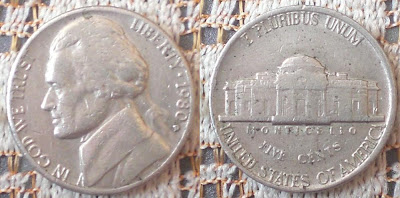
The five cent coin is also called a nickel. The obverse shows Thomas Jefferson, the third President of the US and the principal author of the declaration of independence. He was one of the most influencial founding fathers of repulicanism in the United States. The reverse shows the Monticello, which was the estate of Thomas Jefferson. This coin is struck in Nickel. The diameter is 21.2mm and the weight is 5gm.
10 cent/dime 1996

The ten cent or dime has the face of Franklin D. Roosevelt on the obverse. Franklin D. Roosevelt was the 32nd president of the US, and was a central figure during the 20th century, in times of the economic crisis and the 2nd world war. He came to the office in 1933 and served till 1945. He was the only American president to have served more than two terms. During the great depression of the 1930s, Roosevelt introduced the new deal to provide relief for the unemployed and recovery of the economy. As Britain warred the Axis nations, Roosevelt provided lent lease to Winston Churchill before America's entry into the war in 1941.
On the reverse , we can see a torch, olive branch and oak branch. The dime is minted in cupro-nickel.
25 cent/quarter, 1977

The twenty five cent or quarter shows George Washington on the obverse. George Washington was one of the leading figures in the US freedom struggle and was also the first president of US, in 1776.He became the commander-in-chief of the revolutionary forces in 1775 and led the forces to victory in the American revolutionary war. The reverse shows the bald eagle, which contains the mottoes "in god we trust" , and "E Pluribus Unum". This coin was struck in Copper-Nickel.




